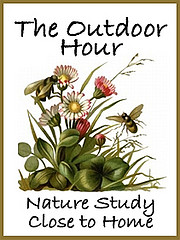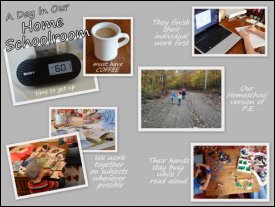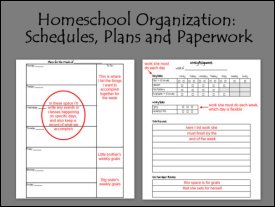 Hi, I'm Heidi and I homeschool my two sweet kids. I want them to know that learning is an exciting lifelong adventure! We love great books, unit studies, notebooking, lapbooking, and hands-on learning.
Hi, I'm Heidi and I homeschool my two sweet kids. I want them to know that learning is an exciting lifelong adventure! We love great books, unit studies, notebooking, lapbooking, and hands-on learning.Review: R.E.A.L. Science Odyssey Life Level One
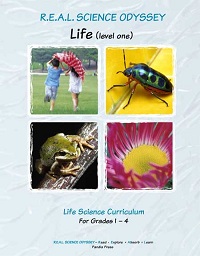
Though not everyone views a formal science curriculum as necessary for children in early elementary years, I have a six year old son who loves all things science. We already did a lot of reading science books and watching scientific shows, but I wanted to spend more time on science in our homeschool and be sure I was covering basic building blocks of science knowledge for both him and his 10-year-old sister. I was excited to receive a copy of R.E.A.L. Science Odyssey Life Level One curriculum from Pandia Press to review. I had seen this curriculum online and was interested in seeing if it would be a good fit for our family.
What is it?
R.E.A.L. Science Odyssey is a science curriculum from Pandia Press. R.E.A.L. stands for read, explore, absorb, and learn. Life Level One is a full year of life science designed for grades 1-4. Each unit consists of a read-aloud lesson page followed over the course of the week (or longer, if needed) by hands on activities and labs that reinforce that lesson. There are student pages for your children to record what they’ve observed and the results of lab activities.
What works for us:
- The text for the lesson is not like a dry textbook, but more like a fun conversation with your cool scientist neighbor. The lesson page is informative but short and interesting enough to hold even my six-year-old’s attention.
- As a fan of Charlotte Mason and lover of good books I really appreciate the list of additional reading suggestions. It is especially handy because it marks which books are highly recommended versus just “more fun than science.” I attempt to request most of these from our library and feel it is a good supplement to the lesson text pages in the curriculum.
- The best part of this curriculum, and the reason it’s a great fit for our family, are the hands-on activities. Very little time is spent with me just talking to my kids about science, much more time is spent showing and doing and trying. As a line in the curriculum’s introduction states: “If you hate to touch “bugs,” wouldn’t think about letting your child handle worms and have no intention of getting gooey and dirty, RUN NOW!” You’ll be asked to bring critters into your home, build models, act out life cycles, and test different functions of your body. Many of the activities are easy to implement and may seem simple, but doing things really cements knowledge for my children.
What doesn’t work for us:
- We don’t usually use worksheets, so some of the printed pages intended for the student to fill out don’t work well for us. I skip the pages that include coloring or labeling the parts of a existing drawing, or simply have fill-in-the-blank questions. Drawing encourages my children to look carefully and pay attention to details. Many pages do have the child make a drawing of an observation and I use those, or if I skipped the included worksheet I simply give my children a blank piece of paper. If I had to estimate I would say I’m able to use roughly 80% of the student pages. Having the building blocks of science covered and hands-on learning activities planned out for me far outweighs not liking some of the printables.
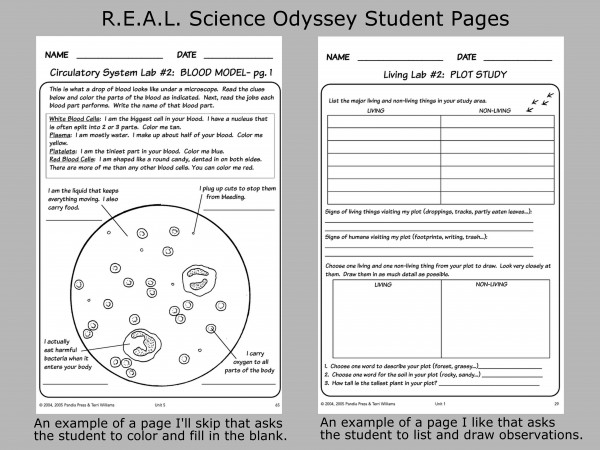
- There are hand-drawn illustrations, but no real photos. In many instances you’ll be going outside to look for worms or a flower instead of needing a picture, but there are many items we don’t have easy access to. Internet searches or additional books will fill in the gap.
- I had to rearrange the order of the lessons. If we had done them in order we would have labs requiring worms, butterflies or other creatures from outside when in Maine the outside is buried in snow. I was nervous about this since the introduction discussed how the curriculum was meant to be used from start to finish with concepts building on one another, but I found it fairly simple to rearrange. The units are laid out this way: an introduction to the basis of life, then a study of the human body, followed by a study of the animal kingdom and then the plant kingdom. We did the introduction and moved into the animal kingdom (the last phylum covered is mammals), then we’ll spend much of the winter on the human body, and finish up with the plant kingdom in the spring when we can actually find signs of life outside.
The bottom line:
If you’re looking for an elementary level science curriculum that involves a lot of hands-on learning R.E.A.L. Science Odyssey may work for you. My kids are learning a lot and enjoy the activities. It’s simple to implement with easy-to-understand text and clear instructions for all labs and activities. Suggestions for supplemental books and websites are already included. This is a secular science curriculum, but other than a list of books covering evolution in the additional reading suggestions I didn’t find topics in this curriculum that would cause problems for Christian homeschoolers.
Check it out for yourself!
Pandia Press shows several preview pages for RSO Life Level One on their website, and there is also a larger preview to download. You can purchase the ebook directly from Pandia Press, or they have a list of retailers that sell the print version. I received the ebook and found it quite easy to use, with the added benefit of being able to print a copy of the student pages for each of my children.
Last Child in the Woods ~ Changes for the Future
I’m here with more thoughts on the book Last Child in the Woods by Richard Louv, joining in Nicole’s book study. Be sure to visit her at Journey to Excellence for her thoughts on these chapters and the big changes her family is making.
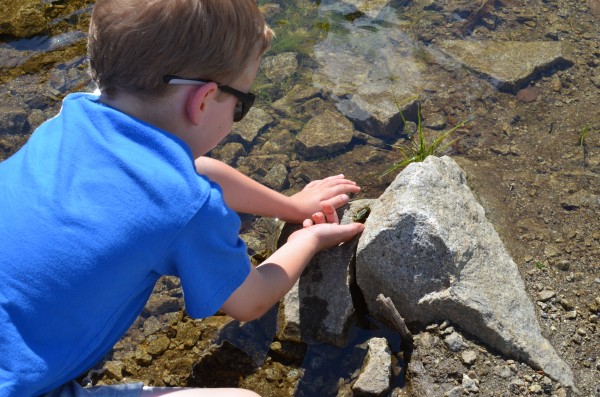
Chapters 18 through 20 in the book discuss ushering in the “fourth frontier” and reconnecting not just ourselves but our culture with nature. These chapters have very big, far-reaching goals that really involve a restructuring of how people live. The author’s point is that we can connect our kids with nature right now, but we need to make changes to our culture or the child-nature gap will continue to widen. I agree, but changes in population distribution sounds too orchestrated to me. I enjoy living in a rural area. If we were moving I would be interested in towns with a big connection to nature. But can you force those interests on the population as a whole?
I’ll admit this: he loses me a bit in these conversations. I tend to think small and change what I am in control of, versus getting involved in larger organizations. I pulled my kids out of school instead of working to change the school system. I was very excited to read the ideas for reconnecting myself and my children with nature that are within my immediate control–things I can implement on my own right now. But when the author talks of sweeping changes in the structure of towns and cities and businesses I feel more overwhelmed than able to help. Clearly there are movers and shakers who get involved in politics and organizations that make sweeping changes, and I’m grateful for them and benefit from the work that they do…but I’m not one of them.
In the discussions of cities he talks of making nature corridors, not just isolated parks that don’t look natural at all. The discussion of allowing movement and genetic diversity did hit home for us: we’ve been studying monarch butterflies and their amazing migration. They need milkweed plants as they migrate north from Mexico in the fall. If they don’t have milkweed plants to lay their eggs on in the southeast, we won’t have monarch butterflies in the summer in the northeast. My plan of action is growing my own milkweed patch, doing my small part. But I do hope the movers and shakers, like the Monarch Watch organization, are successful in protecting these amazing creatures.
Another small part I have been learning about for a while now as a gardener is using native plants that are less resource intensive. I live in a manicured neighborhood and am one of the very few that doesn’t spray my lawn with chemicals. It shows–my lawn is probably 50% clover and dandelions and other “weeds” BUT I haven’t suffered from the grub damage (grubs eat grass roots, not weed roots) of my neighbors with perfect lawns. I also have one of the greenest lawns right now because my weeds are surviving the drought much better than the grass of my neighbors. The reason I don’t spray: my kids and dog can play on it anytime without fear of chemical exposure.
In short, these chapters had interesting ideas, but didn’t give me ideas for implementation in my daily life. There are just three chapters left in the book. Join us for the last installment in this book study later this week or early next week.
Nature Study ~ Mesmerized by Monarch Metamorphosis
I really wanted to raise caterpillars into butterflies for the kids to watch. I really wanted them to be monarch caterpillars. We’d done it years ago and the amazing process is still etched in my mind but even my 10 year old’s memory of it is fuzzy. The caterpillar is striking and not hairy (my son got hives from a hairy caterpillar last year so both my kids now refuse to touch any caterpillars with hair), the chrysalis is like a jewel, and the butterfly is beautiful. The problem: I couldn’t justify the $26 in shipping charges to order monarch caterpillars.
I was determined and, after looking at countless images online felt I could recognize milkweed–the only food monarch caterpillars will eat. This was one of those times when my husband just shook his head, because he knows I get an idea in my head and can’t let it go. He chuckled as I looked into roadside wildflowers on our walks and in the car. I took my family on some crazy back-road drives until I found a country road with tons of milkweed…and I went searching. Here’s me up to my waist in a field of milkweed, searching for teeny-tiny caterpillars. I would have been happy with eggs, too, but since they’re the size of the head of a pin I decided that just might be impossible. My family cheered me on from inside the bug-free car as I battled the mosquitos.
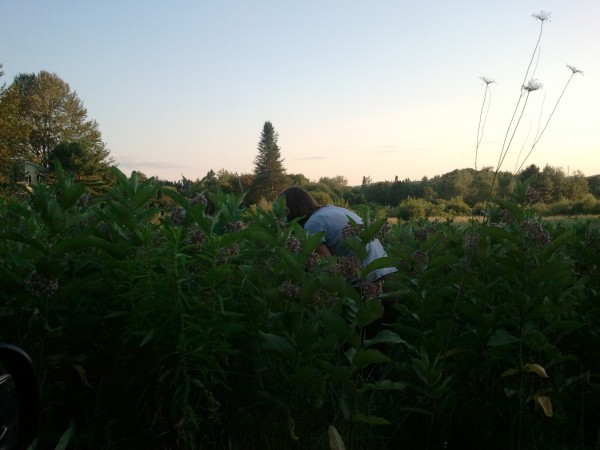
Finally–success! Two monarch caterpillars came home with us. The smallest one (dubbed “Little Guy”) was so tiny he was still whitish with a dark head. “Big Guy” was already getting the striped pattern characteristic of monarch caterpillars. We set them up right in the middle of our kitchen island. Yup, we’re homeschoolers.
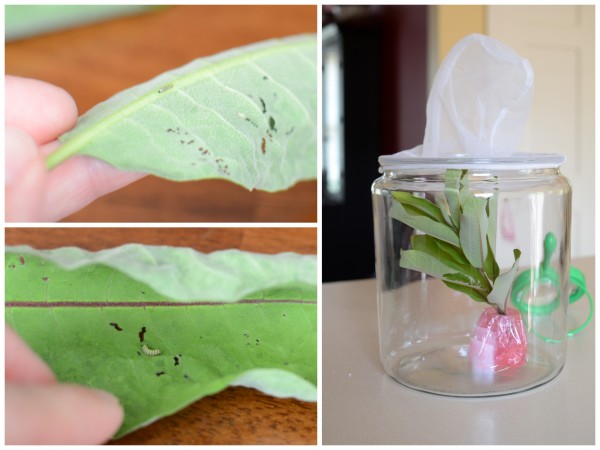
It was amazing how fast they grew! We had several opportunities to watch them molt. We were in awe of how much they could consume in a day, and how much frass (new vocabulary word for my son to avoid the common word for it) they could make.
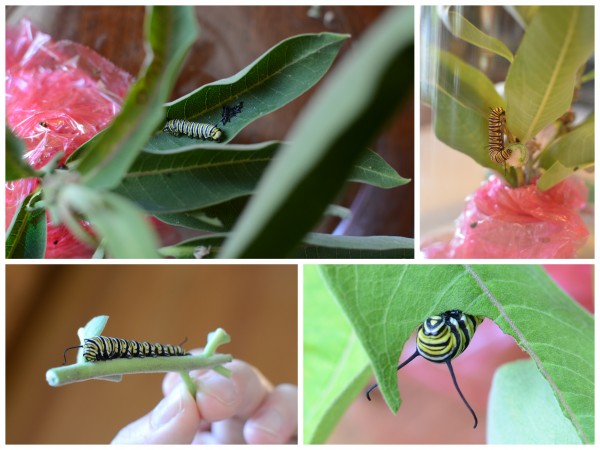
I found that keeping the stems in a small jar of water kept the leaves fresh enough to last a few days, since I had to drive to get leaves for them. One morning I woke up to this and had to go get more leaves before everyone was even out of bed!
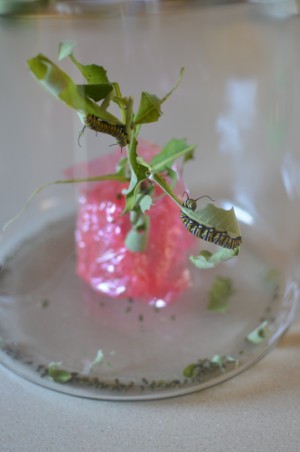
Finally the moment we’d been waiting for: Big Guy moved to the top of the container, attached himself and hung upside down in a “J” shape. We watched with excitement but ended up missing the moment of transformation into a chrysalis!
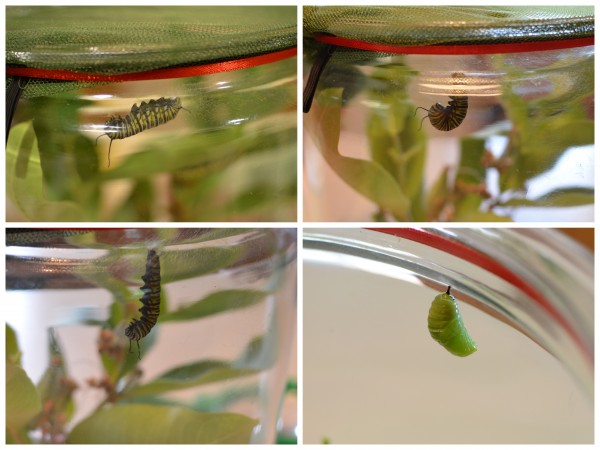
When it was Little Guy’s turn a couple days later my kids were determined not to miss it. I was afraid it would happen in the night and they didn’t want to go to bed. Mr. Tech Support (my husband) saved the day. He reminded me that the fancy camera he bought me can do time lapse photography, so we set it up to take photos all night long just in case. (Okay, maybe we’re crazy…but the kids were excited and I wanted them to sleep!)
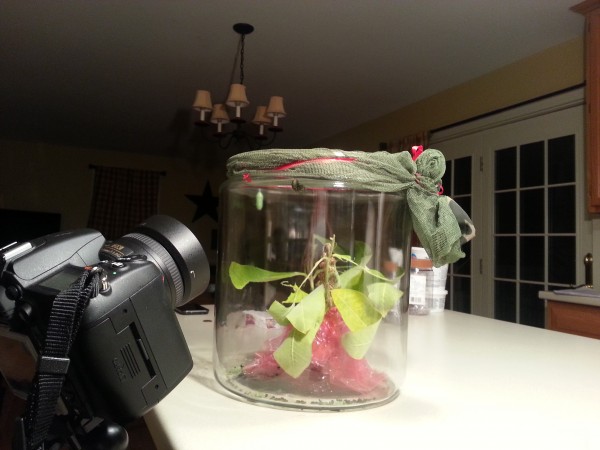
The caterpillar was still hanging in a J-shape the next morning so we set ourselves up to provide constant surveillance. I decided to keep the camera set up taking time lapse because it was really neat now that I’d figured out how to do it. (In fact, I may be taking time lapse photos of everything from science experiments to the cat napping. It’s fun!)
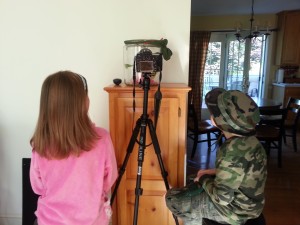
We made sure one of us had our eyes on it the whole time. Finally my daughter yelled and we witnessed the amazing transformation of this black, yellow, and white caterpillar with legs and antennae to a pale green chrysalis with a completely different shape. If you are interested here is my first amateur attempt at time-lapse photography:
We were amazed at the transformation, and how much the early pupae moved about to shed the old skin and attain its final form. Initially you could see the ridges from the caterpillar’s body and some striping, but the color changed and the chrysalis became more opaque. By the end it was a smooth, lovely shade of green. My favorite part are the markings that look like drops of gold paint. Truly amazing.
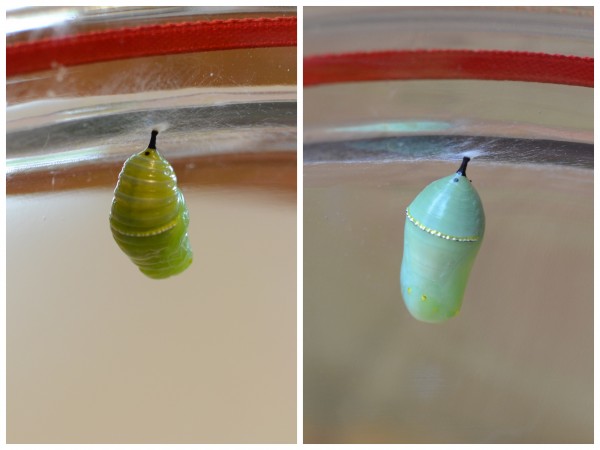
As we’ve been mesmerized by this process we’ve learned a lot about monarchs and butterflies in general using these resources:
- Real Science Odyssey Life Level One: Our new science curriculum had a unit on insects with specific labs about caterpillars and butterflies, so we did the corresponding lessons and journal pages. It meant working out of order but we had to work with nature on this one!
- Go-Along books:- It’s a Butterfly’s Lifeby Irene Kelly: This book has great information on all kinds of butterflies with beautiful drawings, and also fun facts about defense mechanisms and frass (both of particular interest to a six-year-old boy).- The Magic School Bus and the Butterfly Bunch: A good book for covering the life cycle of butterflies.- National Geographic Kids Great Migrations: Butterflies by Laura Marsh: This book has terrific photographs to illustrate the migration of monarch butterflies, a truly amazing feat.
- Magic School Bus episode “The Butterfly and the Bog Beast” (on our Bugs, Bugs, Bugs! DVD): The Magic School Bus show is a favorite around here. This episode gives great information on how butterflies are tough little creatures with many defenses.
- We used just about everything Barb put out for the Outdoor Hour Challenge on monarch butterflies. I highly recommend the You Tube vidoes on monarch migration–it really is an amazing journey! We enjoyed all of the links under “suggested resources to view or print” from learner.org. They have easy-to-understand information on monarchs and their annual cycle, and the link about wings was information we hadn’t read elsewhere. The corresponding information from the Handbook of Nature Study led to some microscope fun: we pulled out our pocket microscopes after I found these unfortunate guys in our garage.
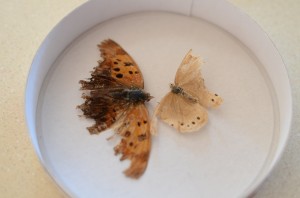 We’d read how the wings are covered with scales arranged in perfect rows, so it was wonderful to see for ourselves. It was also neat to read about the actions of the antennae when the caterpillar is frightened, something we’d observed when we spoke too loudly near the top of their glass container.
We’d read how the wings are covered with scales arranged in perfect rows, so it was wonderful to see for ourselves. It was also neat to read about the actions of the antennae when the caterpillar is frightened, something we’d observed when we spoke too loudly near the top of their glass container.
So now we anxiously await our butterflies. We think of Big Guy and Little Guy just under that green covering, preparing to become creatures that can fly. The transformation takes 10-14 days. This has been an amazing study, and for our family reinforced the wonders of God’s creation. I’ll be sure to update with photos when our butterflies emerge!
***Updated: Here is the post on our Monarch butterflies emerging and being released into nature!***
I’m submitting this to Barb’s Outdoor Hour Challenge Blog Carnival. Be sure to visit her site for nature study ideas, and watch for her blog carnival to see all the amazing summer nature study happening.
Last Child in the Woods ~ Nature in our Homeschool
I’m here with my thoughts on Chapters 15-17 of the book Last Child in the Woods by Richard Louv. I’m participating in a book study hosted by Nicole of Journey to Excellence, be sure to visit her to read her thoughts on these chapters.
Chapter 15 discusses activities that offer a reason and focus for being in nature. Birding and nature journaling were two that we have enjoyed so far. Bird watching is one that my children and I had the pleasure of trying this past winter when we participated in the Great Backyard Bird Count. We prepared by learning about the birds in our area, then over the weekend of the GBBC we enjoyed our roles as scientists tallying birds and submitting our numbers to Cornell University. It occurs in the dead of winter here in Maine and it was great to have a nature-related activity to focus on. Nature journaling is another new-to-us activity mentioned in the book, and we’re all enjoying that through the recommendations of (once again) Barb at the Handbook of Nature Study blog. We often use her notebooking pages for some direction on what to draw. I have found that drawing an item really helps my children pay attention to the details.
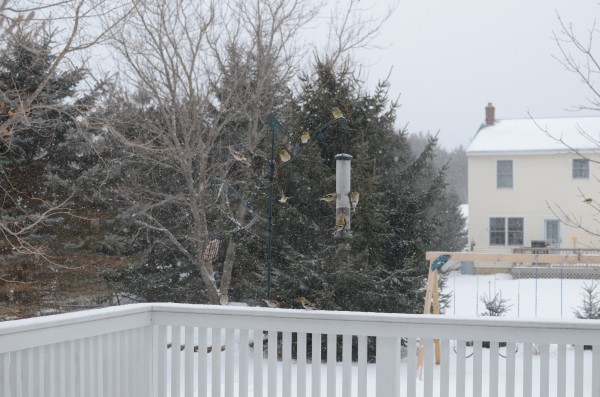
At the beginning of Chapter 16 when I read the statement that teachers should free kids from classrooms I said to myself–that’s my whole philosophy behind homeschooling! Not just so they can experience nature, but the world and its people and places. Then on page 211 there was a quote from a teacher: “This isn’t memorizing information for a test…this experience becomes part of you.” Hello! Again, this is the core of homeschooling for me. For me, school was about memorizing information for a test and then promptly forgetting it! I hope to show my kids a different experience.
This chapter discusses many hands-on nature programs and the success of the students in them. I was thrilled because many of the ideas mentioned are happening somewhere in our home right now–square foot gardening in the backyard, caterpillars growing fat on the kitchen counter, and tadpoles just beginning to get their legs on the deck. This is what science is all about for us at the elementary level: things that the kids can see and touch and be amazed at.
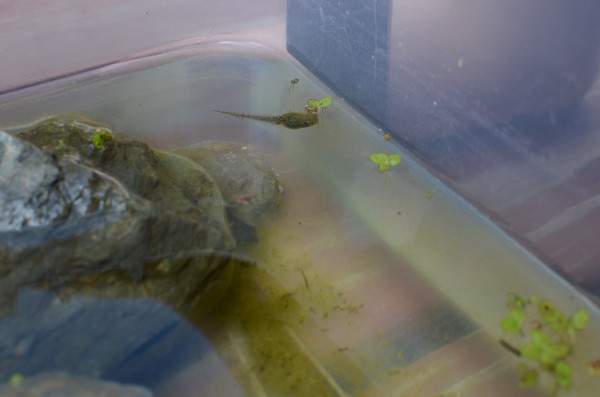
The last quote again hit me as a comment on homeschooling in general: “An environment-based education movement–at all levels of education–will help students realize that school isn’t supposed to be a polite form of incarceration, but a portal to the wider world.”
Chapter 17 talks about summer camps being a way to make nature more accessible to kids, and a lot of that discussion wasn’t really relevant for me. For our family, camping together at state parks provides the beneficial experiences and works for us while my kids are fairly young. We aren’t staying in a fancy camper with a bathroom, air-conditioning and television. It’s a pop-up with no plumbing, wooded campsites, and sleeping with the windows open.
I was interested in the author’s discussion of schools spending so much money on soon-to-be-obsolete electronics when they should spend it on natural areas where teachers can take their students to learn with all five senses. Case in point: our town just built a gigantic new high school surrounded by huge parking lots and athletic turf and running tracks. There is no natural area to spend time in, the library is smaller than before, and yet students will receive iPads to use. I also found out the other day that our middle school children have no recess at all. None. Parents were surprised that I thought this was sad! It didn’t seem to bother them that 12 year old kids don’t have time for recess or even 15 minutes of fresh air.
These chapters mark the end of the section of the book with ways to connect your children with nature at home and through their education. The next section is dedicated to ushering in what the author calls the “Fourth Frontier:” reconnecting our society as a whole with nature.
Last Child in the Woods ~ Stepping Back
I’m continuing on in the book study on Last Child in the Woods by Richard Louv hosted by Nicole of Journey to Excellence. Be sure to click over and read her thoughts on Chapters 12, 13 and 14. We’re getting to the part of the book with ideas on reuniting your child with nature.
The main thought to hit me during Chapter 12 came when the author stated that we should strive to make the experience in nature as unorganized as possible while still meaningful. I am a list-making lesson-planning micro-manager, so I have to fight my personality here. The message came again in a quote from E.O. Wilson: “Hands-on experience at the critical time, not systematic knowledge, is what counts in the making of a naturalist.” Ouch. Then in two different posts Barb (from Harmony Art Mom) used these quotes from Charlotte Mason:
Children are quick. In fifteen minutes, they will have finished with their sight-seeing exercise or imaginary picture painting. Other than that, an occasional discovery that the mother shows them with a name and maybe a dozen words about it at just the right time are all that’s needed; the children will have formed an interest in something they can continue on their own. Just one or two of these discoveries should happen in any given day.” Charlotte Mason, volume 6 page 78
They must be left to themselves for a good part of the day to take in their own impressions of nature’s beauty. There’s nothing worse than children being deprived of every moment to wonder and dream within their own minds because teachers and adults are constantly talking at them, not leaving them a moment’s peace. Yet, the mother must not miss this opportunity of being outdoors to train the children to have seeing eyes, hearing ears and seeds of truth deposited into their minds to grow and blossom on their own in the secret chambers of their imaginations.” Charlotte Mason, volume 1 page 44
I adore nature study and it is a highlight of for all of us, but I need to beware of making every moment in nature an official study and thereby not giving my children a moment’s peace to enjoy and experience nature for themselves. I like the description: a dozen words at just the right time.
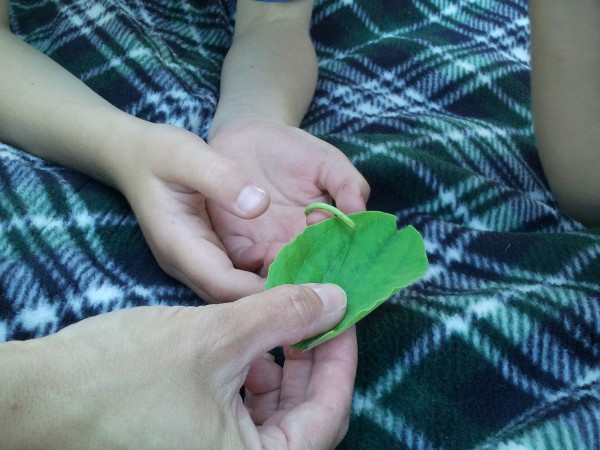
Chapter 13 reiterates the message: don’t make time in nature a chore or another “Fine Educational Opportunity” (love the terms!). There are many ideas in this chapter to connect your kids with nature, beginning with connecting yourself with nature and letting your enjoyment be contagious. Among the many ideas for great activities to do with your kids (the with is important) he talks about making walks a mutual adventure, not a forced march. Here I’m guilty again, at least at times. Believe it or not, I may have been better about some of this before I was homeschooling. When I wasn’t trying to teach them everything under the sun all the while having a way to show that they learned it I was a little (okay, a lot) more relaxed with our time. The good news for me: after reading this book we have been getting outside more already, and through homeschooling and nature study I’m reconnecting with nature. Nature study has rekindled my interest and excitement about the natural world. As I enjoy learning all I can, I need to remember my children’s ages and Charlotte Mason’s edict: just a dozen words to them, not unloading all the fascinating information I’ve read. I have a lot more work to do on my approach, but I am happy for the curiosity and excitement I see in my kids. As we sat at a lake this week my son kept bringing things to me that he thought were exciting (water lily flowers and seed pods, various dead insects) and he knew I’d be excited to see them, too.
Chapter 14, entitled “Scared Smart” dealt with parents’ fears about kids being out in nature. As I’ve mentioned, I am a worrier so this is a difficult area for me. The author suggests that time in nature can foster “hyperawareness,” accentuating their senses and teaching them to pay more attention to their surroundings while also increasing their self confidence, leading to kids who are safer all around. The worrier in me did feel better when he talked about having them be with friends and have cell phones when going beyond our eyesight. My kids are too young for cell phones, but I am trying to tweak things a bit. I’ve had the opportunity a couple times to use the method he calls controlled risk: giving some physical distance, so even though I keep them within eyesight they get a little more of a solitary feeling. That’s me in the photo below, they’re walking along the beach ahead of me. Baby steps, right?
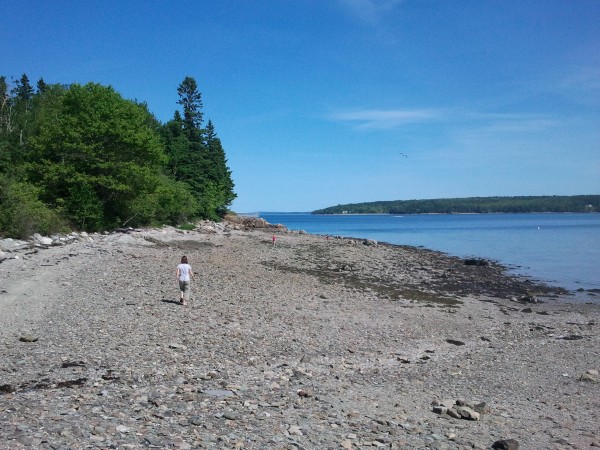
So my take-home message this week, in short, is to take a step back: don’t hover and don’t talk at them the whole time. Come back next week for Chapters 15, 16 and 17. The next chapters have more information on connecting your child with nature, both in daily life and in their education.
Last Child in the Woods ~ Barriers to Free Play in Nature
I’m chiming in again in Nicole’s book study on Last Child in the Woods from Richard Louv. Be sure to visit her post to read her thoughts and those of others participating in this book study. This post covers chapters 9-11, which are in the section of the book dealing with why kids don’t play outside.
Chapter 9 had me nodding my head all over again with its discussion of over-scheduled kids. This topic had already come to my mind while reading this book, as I mentioned in my post on chapters 5-8. Not only is there less time for recess during school, but homework, lessons and other organized activities take up much of the time left after school. Like I said, I’m happy for the chance to homeschool. I can prioritize my child’s time to allow for the things that are important. Nicole mentioned the suggestion on page 121 in her post, and that was just what I needed, too: take time in nature out of the leisure column and put it in the health column. I love to make lists and check things off, and often have a hard time relaxing and not feeling like I’m accomplishing something. After reading all the chapters on the benefits to time in nature, I am hopeful I can view unstructured time outside as just as necessary for the kids as working on math and not let it fall by the wayside if we’re busy.
Chapter 10 is a little harder for me. I agree with much of it. I know the chances are very low that someone will abduct my child as they ride their bike down the street. But I am a worrier and don’t see myself being able to relax a lot in this department. As I discussed in my last post I hope to add more natural elements to our yard, along with giving my kids more time outside without me orchestrating activities. I can’t see myself letting them roam the neighborhood out of our yard, or head into the woods without me, but I can try to take them there more myself and maybe hang back a bit. Baby steps, right?
Chapter 11 was an interesting one. I had mentioned in my first post of this book study that I’d been incorporating nature study quite a bit, and hoped to do so even more. This chapter really cemented that plan for me. The discussion of how abstract many children’s nature education is rang true with me: in school it’s “Go Green!” and recycle, and learning about rainforest destruction or endangered animals, but “nature” is still a concept they are just seeing in a book or show. They aren’t out in it experiencing it and falling in love with it. This is how you really improve environmental issues, not by teaching them about things far away that they can’t see, touch and smell for themselves. I liked the quote from biologist Elaine Brooks on p. 141: “Humans seldom value what they cannot name.” So if kids can identify Pokemon characters better than native plants, what do you think they value the most? I wanted to incorporate more science education in our homeschool, and I realized after reading this chapter that the nature study that we already enjoy can be a big piece of their science education, not something separate that I fit in only if we have time. I just have to mention Barb at the Handbook of Nature Study blog while I’m on this topic because ideas from her blog are the how of nature study for us.
I’m really enjoying this book. Now that I’ve been persuaded of the importance of time in nature I am excited to delve into the parts of the book with ideas for implementation of a nature-child reunion!
Nature Study ~ Exploring the Beach
We had tremendous opportunities for nature study while camping at our favorite spot on the Maine coast this week. Learning while camping…that’s what I love about homeschooling!
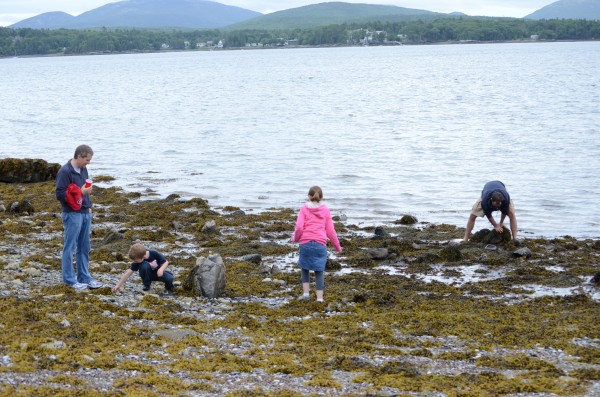
A beloved uncle was along for the trip and dazzled the kids with his ability to find creatures to observe. Even my usually squeamish daughter was holding and touching everything. I stood by with my camera attempting to capture all the amazing creatures and the wonder the kids had holding and touching them. We had done a Homeschool Share unit study on oceans last year and learned about some of these same creatures, but there is nothing like a hands-on experience! Barb talked in her newsletter about children being able to remember their experiences at the ocean beach years later, and I am confident this morning of exploring with all their senses will stick with them for a long time.
There were lots of crabs. It was interesting to feel the differences in their shells–some were quite soft from molting recently.
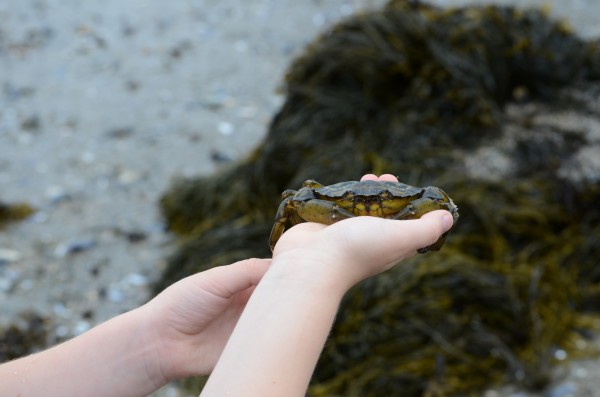
They found many different sizes.
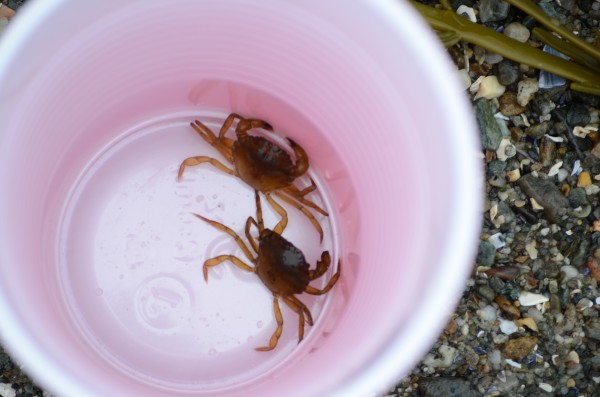
The sea stars may have been my favorite. Seeing their tube feet move around up close was amazing.
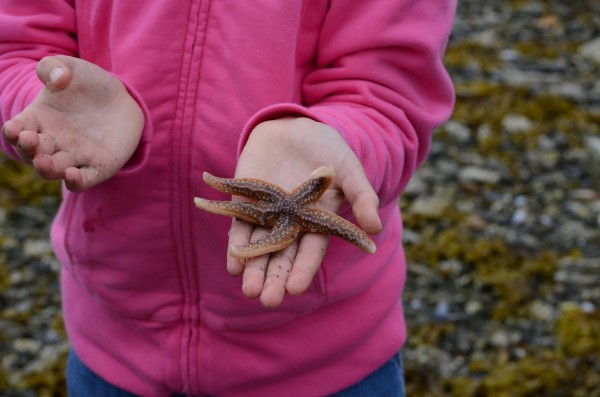
This was really exciting: a sea star missing a ray. I was able to remind the kids about their ability to regenerate that we learned about last year.
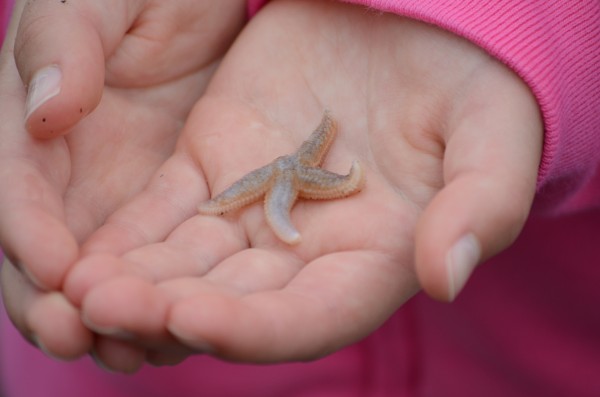
For the record, I did NOT hold this guy. Eels would be a good subject for future study because we didn’t know much about him.
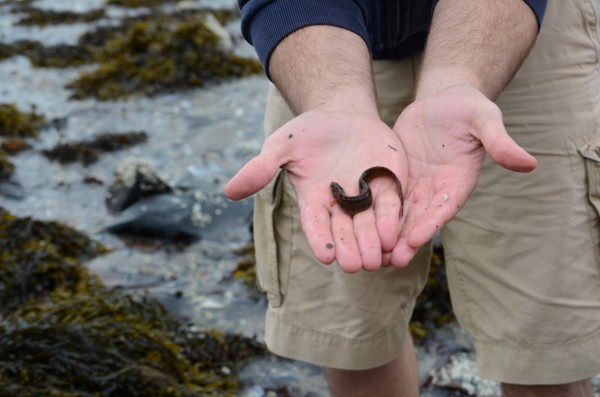
While Daddy grilled lunch back at the camper the kids worked on their journal pages using a free page included in Barb’s Handbook of Nature Study June Newsletter.
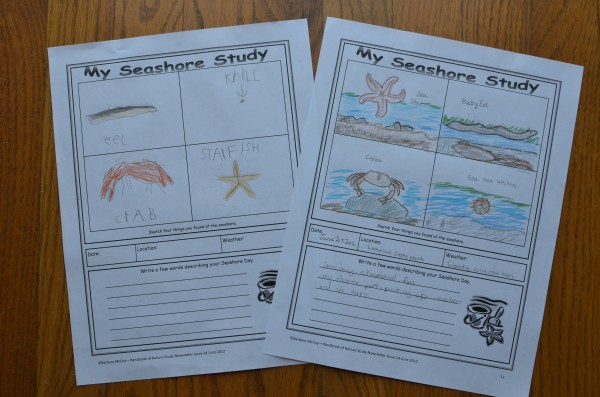
Using ideas from Barb’s Outdoor Hour Challenge: Sand and Soil we brought home some sand to study. I took a sample from higher up the beach and then, at my daughter’s suggestion, another sample very close to the low tide mark. We spread some of each sample out and enjoyed inspecting them on white and black paper using a magnifying glass.
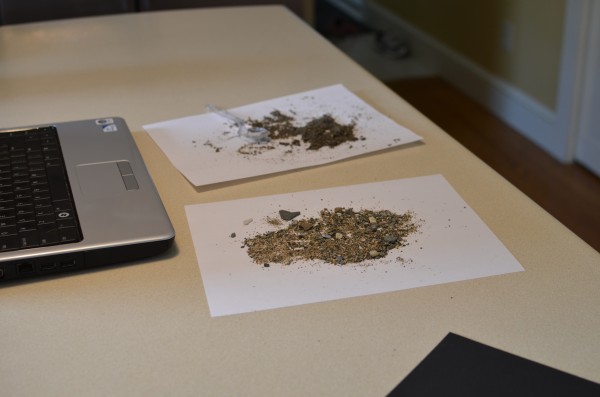
They were impressed when we looked at a piece of quartz under a little hand-held microscope.
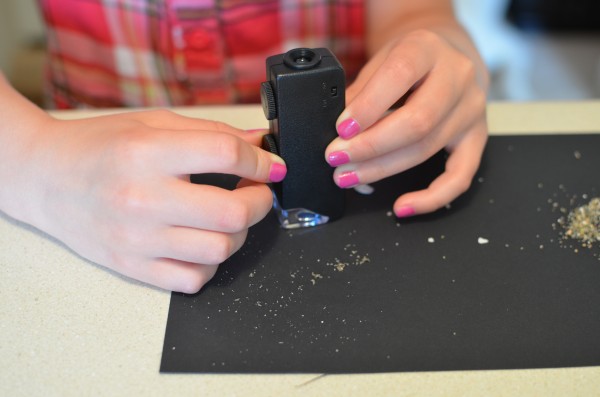
My son was completely amazed that some rocks were attracted to his magnet! He spent time when we were done just moving the magnet around over the sand and making rocks move.
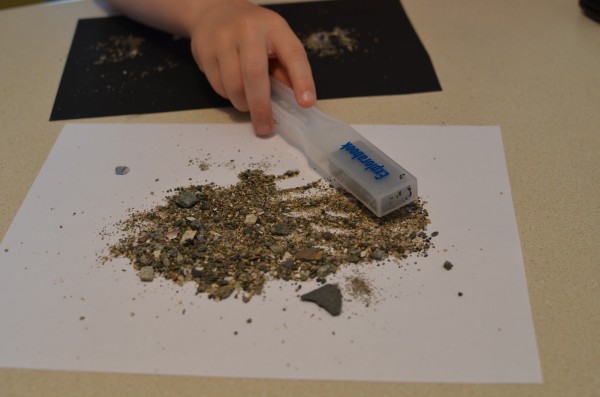
I grabbed some soil from our garden and we performed the soil experiment from Barb’s links. I didn’t get too technical with the kids, but we did talk about how quickly the sand settled, the sizes of particles in the different layers, and as a gardener I talked a bit about the difference soil types can make when you’re planting. I was intrigued by the idea Barb showed of keeping sand samples from different beaches you visit, so this will be our sample #1!
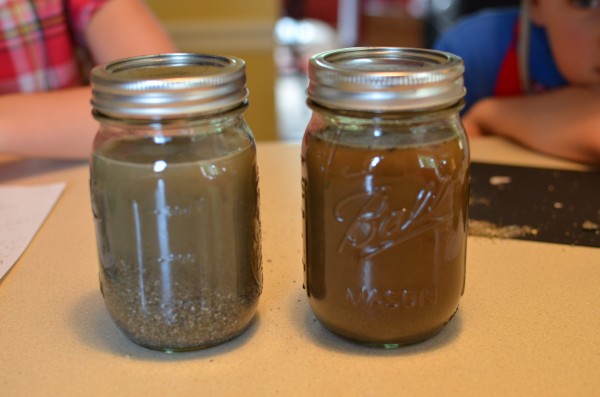
What a terrific week: camping at our favorite spot, time spent with a crazy-fun uncle, and a lot of nature study thrown into the mix. I love summer school!
Last Child in the Woods ~ The NEED for Nature
I’m back with more thoughts on Last Child in the Woods by Richard Louv. Nicole from Journey to Excellence is hosting an informal book study, and you can read her thoughts on Chapter 5, 6, and 7 and Chapter 8. Be sure to head over to her blog to read her thoughts and those of others participating in this interesting book discussion. I was a little behind so I’m here to share my thoughts on Chapters 5-8, which are all in a section of the book explaining why we need nature.
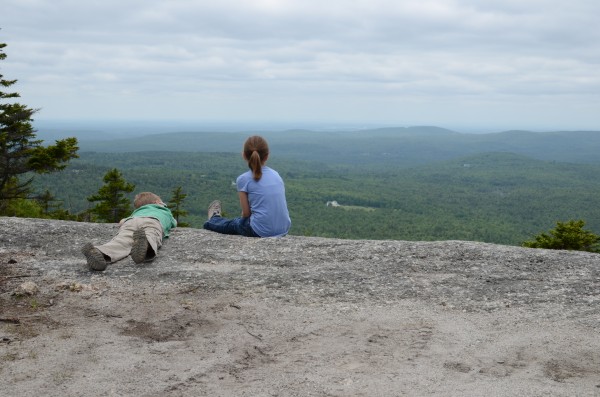
I’d commented at the end of my thoughts on Chapters 1-4 that I thought reading this book would make time in nature move higher up my priority list–and this section of the book has definitely done that! Chapter 5 discussed how nature develops the senses. I was especially intrigued by his thoughts on “primary experience” and how most of what children get these days is dual-sensory information from television and computers, with fewer direct experiences doing and building with all their senses. The section on “packaged nature” reminded me of the difference in listening to a thunderstorm CD versus watching the flashes of lightning and feeling the power of an actual thunderstorm outside your window. I agree with Nicole’s feelings of videos online being far less engaging for my children than a hands-on experience. We had read loads of books and watched shows about the Pilgrims, but nothing cemented it for my kids like our trip to Plimouth Plantation to be immersed with all our senses in what life was like for the Pilgrims.
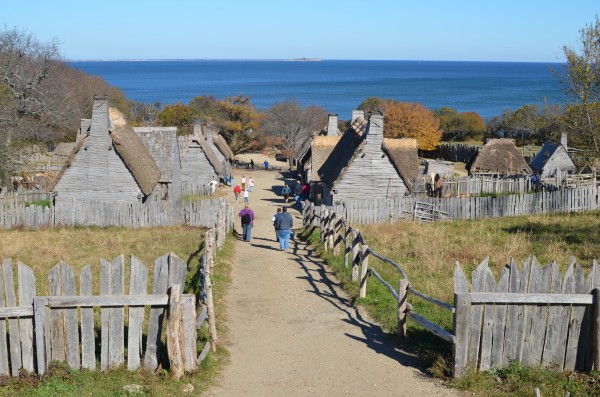
Chapter 6 delved into the theory of multiple intelligences developed by Howard Gardner, and the relatively recent addition of an 8th intelligence termed “nature smart.” I love the description on page 78: “Perhaps the eighth intelligence is the intelligence within nature, the lessons waiting to be delivered if anyone shows up.” The discussion with a landscape architect talking about designing more natural outdoor spaces had me really brainstorming ideas for my yard. What can I incorporate in my small suburban yard to make it more wild and natural, and thus more stimulating to the senses and imagination?
Chapter 7 talked about “loose-parts” toys that are open-ended, allowing children to use them in multiple ways. This is one of the sections in the book where I found myself generalizing and applying the ideas to not just time in nature, but childhood in general. I have often bemoaned the trend in children’s toys having a single way to play with them. It’s why I’ve always leaned towards things like building blocks and dolls that require imagination and creativity. Coming back to nature, I want to incorporate more “loose parts” for outdoor play and make sure as I garden and landscape around our small yard I am thinking of stimulating my children’s outdoor play.
Nicole was right when she said Chapter 8 was a meaty chapter, and I found myself taking copious notes. Even in the early grades I was struck by how little recess my daughter had at school, and I know it is even worse in other areas. (I had to laugh at the quote: “Lifers at Leavenworth get more time in the exercise yard.”) What I think makes it especially hard for children these days is that when they get home they have homework at a far younger age, and then if you try to add enrichment like music lessons they have even less free time and exercise. I am thankful for the ability to homeschool…if my children were in public school it would be harder to dramatically increase their contact with nature. The reiteration of time in nature as restorative, allowing you to come back with better ability to focus, really hits home for me. My son is a very active boy, and even in preschool the teachers raised questions about his ability to pay attention. Like Nicole mentioned with her son, I am confident he doesn’t have ADHD because he can focus for long periods of time if something is interesting to him. I do notice his attention waning sometimes at home, and up until now I would try to push through and finish our schoolwork so he could then have his free time. My new plan after reading this is going to be to take a break to head outside, and finish the schoolwork with better focus after we’re all refreshed.
There were two other things I took away from chapter 8. One, like Nicole mentioned, was about where we do our schoolwork. The study on the benefits of even a view of nature on focus and concentration was interesting. In a happy coincidence I recently rearranged our schoolroom so both kids have a better view out the windows, but I am going to focus more on what they see out the window. I’m thinking of adding another bird feeder there, or maybe a birdbath. Another piece of information from this chapter requires a little rearranging for me. A work-in-progress study seems to show that a walk in a natural setting is more beneficial than a walk in a manicured residential area. As I said in my earlier post, we get outside nearly every day but usually for a walk around our neighborhood. I am going to make it a goal to head to more natural areas for our walks more often. Like Nicole says, as parents we just need to make the effort.
Last Child in the Woods ~ Free Play and Fear
I had requested the book Last Child in the Woods by Richard Louv from interlibrary loan, and then I saw that Nicole from Journey to Excellence was going to host a book study. How perfect! Today I’ll be sharing my thoughts while reading the first four chapters. Be sure to click over and visit Nicole to read her comments.
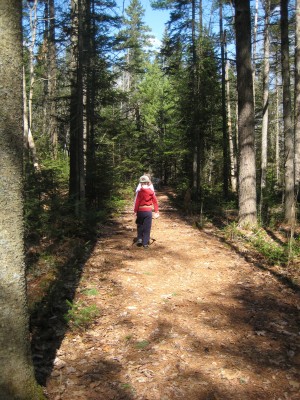
While reading the beginning of the book I was flooded with my childhood memories growing up in a very rural area on old potato farmland. In warm weather I was running around exploring in the woods, rolling down grassy hills, and visiting the frog pond. In winter I was sledding and building forts until my hands were blue. I remember very little of toys I had, but I can replay the sights and smells of the fields and woods in my mind.
After reminiscing my thoughts turned to the way my children are experiencing nature, and I am struck with a difference between my experiences and those of my children. I agree wholeheartedly with much of the author’s discussion of these generational differences, and how much less children are experiencing nature directly now. We are fortunate not to struggle as much with some of the impediments: homeschooling does give us more unstructured time, and we live in Maine with lots of access to natural areas. In Chapter 3 when the author quoted a British study that kids could identify Pokemon characters better than native plant species I gave myself a little pat on the back for incorporating nature study into our homeschool fairly regularly over the last year, and determined to work it in even more in the coming years.
After the pat on the back I felt not so proud in one area: free play in nature. With homeschooling I looked forward to giving my children more time to enjoy time outside, but truthfully free play has not happened as much as I would like. We do walk or ride bikes most days (thanks to our dog), but free play in nature is not as big a part of their lives as it should be. Often I’m with them and tend to be still directing things. I was especially interested the discussions in Chapter 4 on the type of outside environment, and how there does seem to be a difference between outdoor play on a structured playground versus a more unstructured natural setting. This is one area that is difficult because we live on a small lot in a relatively new subdivision with mostly lawns and gardens and no wooded areas. I’m afraid there isn’t as much nature to fuel the imagination in our backyard as there is in a less manicured area. I have to take them to more natural places, and when I do our time is limited by me wanting to get back home to my lengthy to-do list. I don’t want my responsibilities as an adult to shorten their time to be kids and experience the same play time I had as a child, but it really is difficult.
Other than my feeling the need to be home to get things done, the other barriers to unstructured time in nature for my children is my fear. I have a hard time if they’re playing where I can’t see them. I fear they’ll get hurt and I won’t be there to either prevent it or help when it happens. Add to that a fear I am especially struggling with this summer: ticks. I have had ticks on me recently, and I have a friend recently diagnosed with Lyme disease. I hate to douse ourselves with chemicals in order to spend a little time in the woods, but reading the many benefits in this book may push me to try getting out in the woods more, even if a hefty dose of DEET has to go with us.
As I read Chapter 4 about nature’s healing properties, I remembered during my teen years taking walks in an old farm field across the road. Once I walked out into it and over the hill, I couldn’t see a single house. It was just me and the wind and the wildflowers. It was so calming and a great time to think. I have seen days in our homeschool that just are not going well and time outside (especially in the woods) has saved the day. I am determined to use nature more to benefit both myself and my children.
I’m very excited to continue reading this book. It reminds me a bit of my feelings when reading The Read-Aloud Handbook by Jim Trelease. I already read a lot to my children, but that book reinforced for me the many benefits of it and assures that time for read-aloud will not be the first thing we cut if we’re low on time. I have a feeling time in nature will also be higher on my priority scale after finishing this book.
Nature Study–No Planning Needed!
Nature study is one of my favorite parts of the Charlotte Mason philosophy. We try to incorporate it as much as we can, with many of my ideas coming from Barb at the Handbook of Nature Study blog. One of the most common ways we fit in nature study, however, takes no pre-planning at all. You could call it interest-led or on-demand or lucky coincidence…
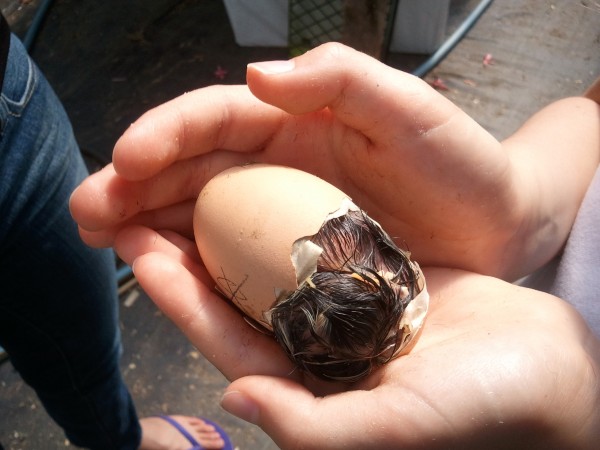
When we see something in nature that we’re curious about we spend time researching it. I know, amazing thought, right? And it really is that simple. The more complicated side is putting aside my plan or list and being willing to detour and slow down. It means when we are at our small town’s garden store for what is supposed to be a twenty minute shopping trip being willing to stay an hour and a half so my daughter could hold a chicken egg in her hand while it hatched. It means dropping the load of laundry to run to the window and see the bird at the feeder. It means crouching down on our neighborhood street (when I’m really just trying to get our dog some exercise) to watch a snail. It means stopping the lawnmower, grabbing the bug box and finding a way to get a huge green beetle inside it. (And yes, I did let out a squeal when he touched me.)
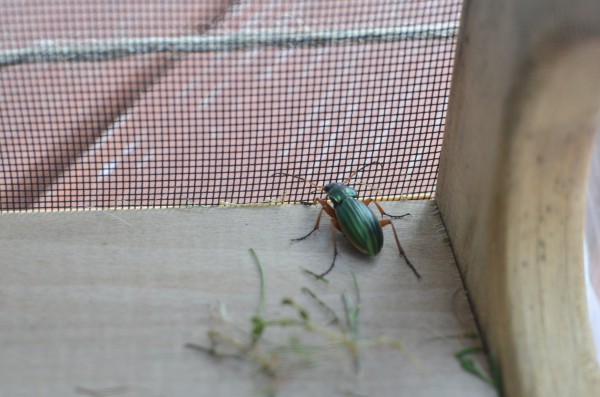
There is a great benefit to this method even aside from the easiness of it. Not only do we learn a lot about the natural world without tons of planning on my part, but it fosters my children’s curiosity. It has encouraged them to call out to me: “Hey Mom! Look at this! What is it?” I always try to go and see it. If we can we bring it home to study (like the garden snails I carried in a dog waste bag), otherwise we take a picture (great use for the camera on my phone).
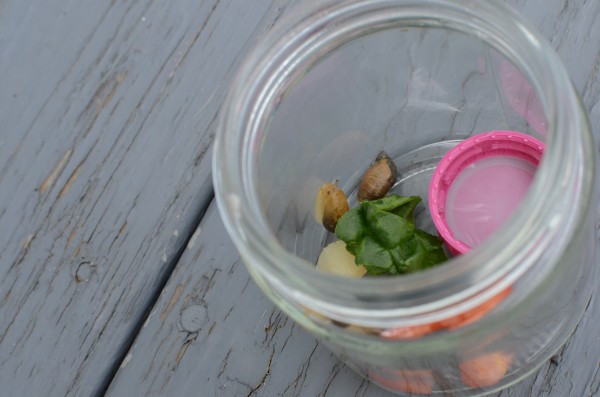
At home we follow through and find out what we can about our topic. I love having field guides and reference books on trees, insects, and birds around the house so we can grab those and start thumbing through to track down our item of interest. (As a side note: building a reference library doesn’t have to be expensive: most of our books I’ve picked up on clearance or at used book sales.) This can help with beginning identification on things like the big green beetle where I don’t know what to type in for an internet search. If we’re not positive of the identification based on the drawing or picture in our field guide, I’ll often do a Google Images search and compare the images with what we found to help us be sure. For birds you can’t beat Cornell’s All About Birds website to identify and then learn everything you wanted to know, and even watch a video or listen to audio recordings. If it’s just a feather you find, then check out the Feather Atlas from the U.S. Fish and Wildlife service. The Discover Life site has ID nature guides that cover just about every living thing. This site is so detailed it can be a little harder to navigate, but many of the guides have photos to make it easier. For instance, under insects you can choose caterpillars, then using the photos select the main body color, pattern, and other features to arrive at an identification.
That would be how I identified the caterpillar that gave my son an awful rash. Oh, and that was after my husband said, “I thought you weren’t supposed to touch hairy caterpillars.” I waived away his concerns, saying surely in rural northern Maine where I grew up we touched all sorts of them. I let the kids play with them for a couple hours, draw them and build them houses. Let me just say that I was really eating my words at 2:00 AM when my son was itching and crying covered in hives. My dear husband didn’t even say “I told you so,” though I really deserved it!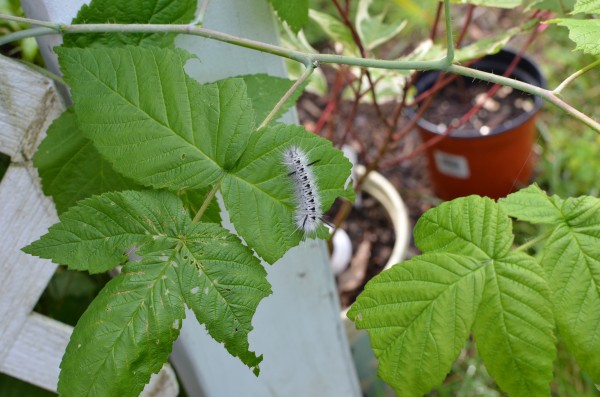
My favorite nature reference book that we own is The Handbook of Nature Study by Anna Botsford Comstock, an amazing book originally written in 1911. It doesn’t have color photos like most field guides, but it’s loaded with interesting information. That’s where we pick up fascinating in-depth knowledge, like how the bleeding heart flower has a hinge to expose the pollen while bees are drinking the nectar. Barb’s Handbook of Nature Study site is a great place to find educational links and study activities if you want to dig deeper. It was through links on her site that we learned a garden snail can have over 400 babies in a year (and why the garden snails we brought home were returned to their previous area!) And if it’s something my kids are still showing a lot of interest in, we’ll grab books on it at the library and read until their curiosity is satisfied.
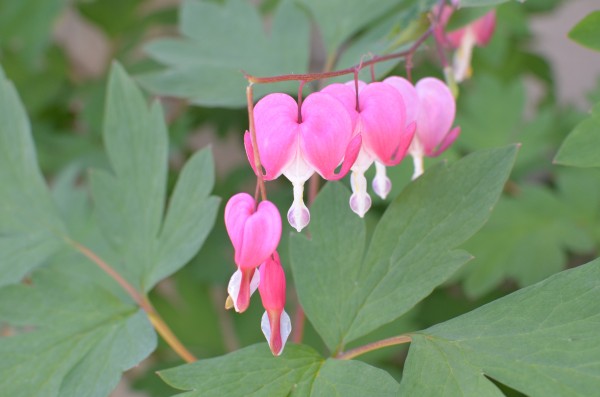
At least until the next time I hear: “Hey Mom! You’ve gotta come see this!”
